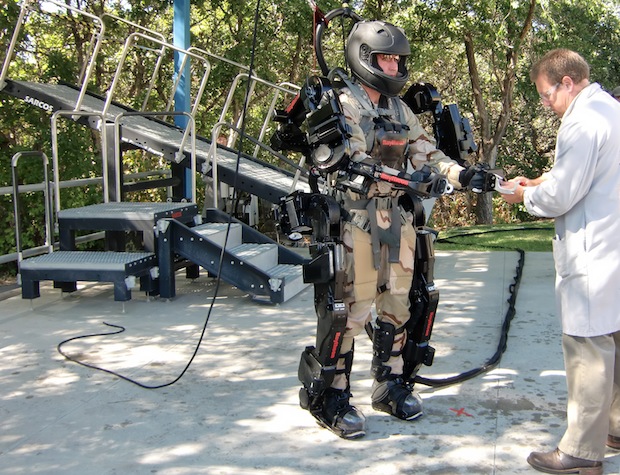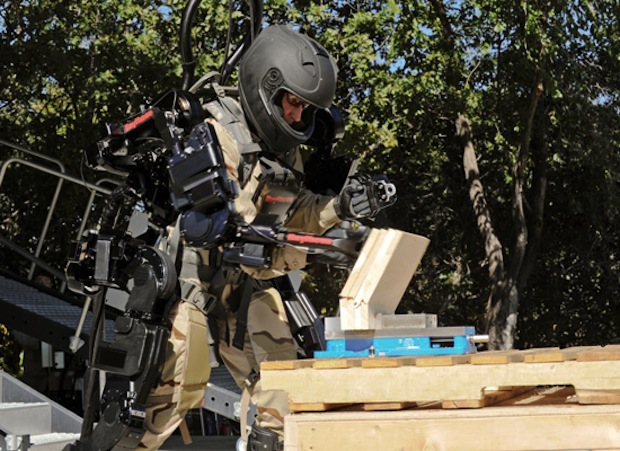http://player.ooyala.com/player.swf?embedCode=JhYW1xMTpv_-XezigxCCVrpwww6ZlcsV&version=2
I recently went to fabulous Salt Lake City to the Raytheon Sarcos facility to see the real life version of the Iron Man suit, the XOS 2. And while this suit isn’t powered by some futuristic kind of reactor embedded within a person’s chest, it’s still very impressive.
The XOS 2 is the latest version of Sarcos’ exo-skeleton system. Sarcos has been working with automation for years (including the fountain at the Bellagio), and the XOS2 uses hydraulics to enable a wearer to lift massive amounts of weight without feeling the strain. More importantly, the person wearing the suit can lift these weights repetitively without feeling the strain. The XOS 2 has a quite impressive 17:1 lifting ratio, so when the person wearing the suit lifts 170 pounds, they only need to exert enough force to lift 10 pounds.

The XOS 2 comes in a couple of different variations, including a combat version, and a logistics version. The combat variation is not a weapons platform (as some might think), but rather an untethered design using just the legs. The combat variation’s purpose is to enable a soldier to carry a heavier load over greater distances without fatigue. Currently, the modern soldier carries a pack that weighs anywhere between 150-170 pounds, and any type of long distance travel on foot results in serious fatigue. Using the XOS 2, that same soldier would be able to that same 170 pounds, but it would feel like a mere 10 pounds.
The logistics variation is more of a workhorse style, combining the arms and the legs. This enables a soldier to load and unload munitions and other heavy items without experiencing repetitive stress injuries.

There are some limitations to the to exo-skeleton, though. The biggest drawback is that the suit is not self-powered. The lead engineer (Dr. Smith) indicated that they are currently working on a backpack based power source, but the ultimate goal is to reduce the power requirements to a point where the suit is completely self contained. Maximum running speed is about 3 mph, and the suit is agile enough to kick a soccer ball, or punch a speed bag with minimum issue.
I asked Dr. Smith about the possibility of scaling the technology up to say, a Mechwarrior size model. Dr. Smith said the issue is that the suit is currently designed to work in a human-scale environment, but it is ultimately feasible for someone to create a giant walking robot. He also freely admits that the Sarcos lab is inspired by the fictional robotics that everyone grew up with, and there are Iron Man figures everywhere in the Sarcos offices.
If you want to see a flying combat suit, you’ll have to pick up the Iron Man 2 DVD or Blu-ray tomorrow. But if you want to see the real thing now, check the video above, or the image gallery below.